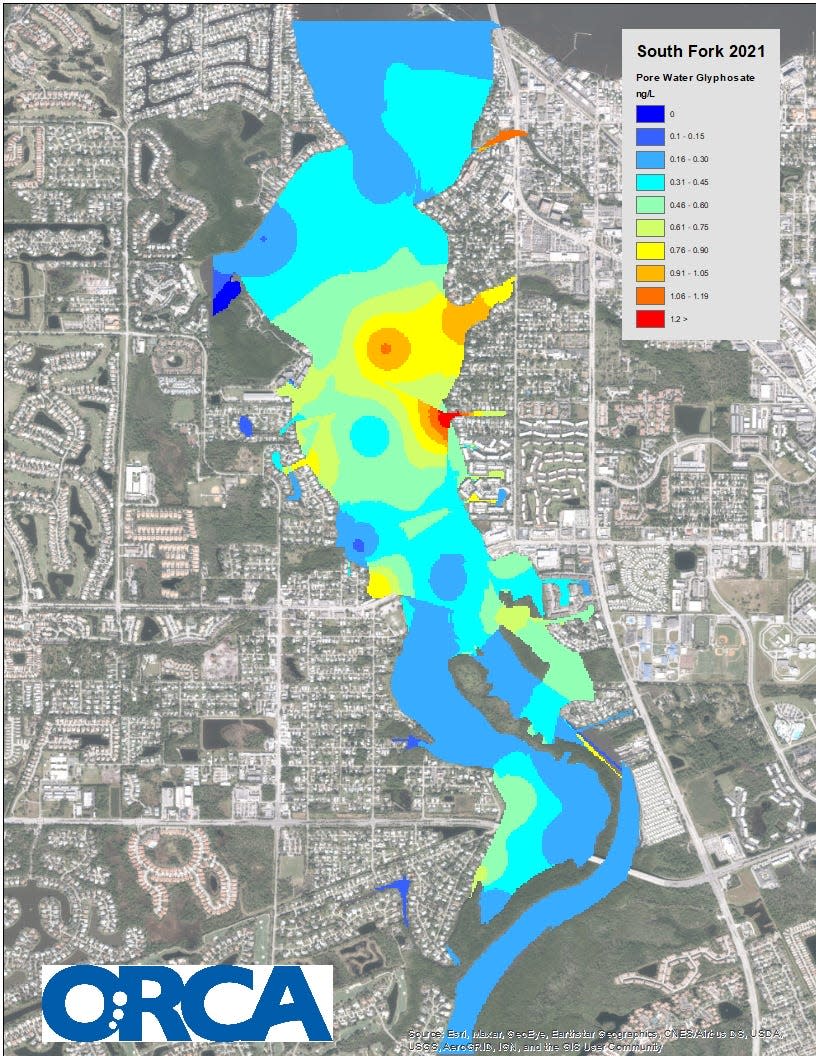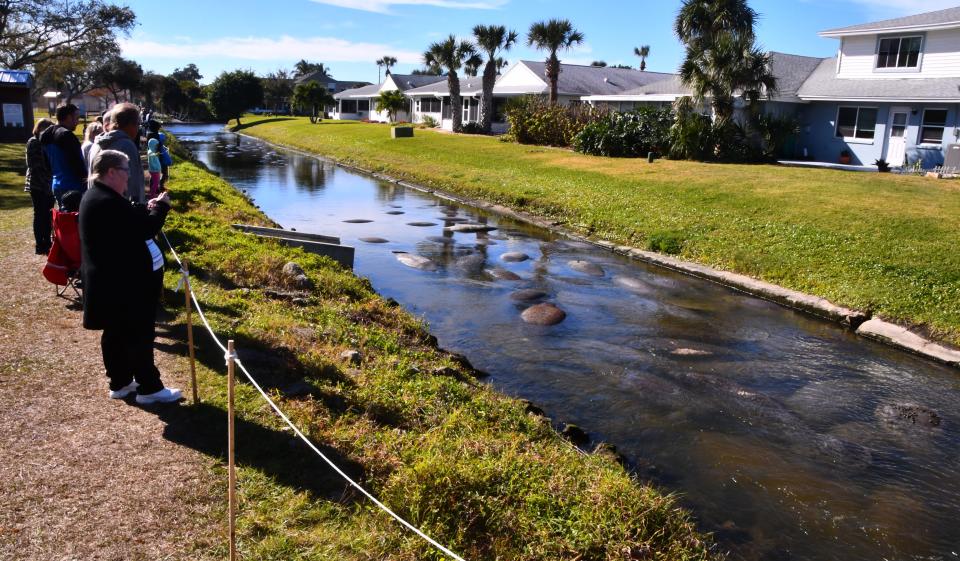Want to help manatees, limit pollution in Indian River Lagoon? Control yourself | Opinion
Everyone likes to point a finger at someone else for causing pollution. But how often do we look into the mirror and consider our own actions and lifestyle?
Do you use pesticides? Do you use herbicides like a weed and feed? Do you use household chemicals? Do you use pharmaceuticals? Do you go to the bathroom?
The answer is “yes,” we all do, whether on our own or when living in a community with a landscaping company to keep our properties green and weed-free.
Do you know that whatever you put on your lawn or send to your septic tank or local sewage-treatment plant will end up in local canals or streams and eventually goes into the Indian River Lagoon and the ocean? You must have seen the roadside signs that say “All Canals lead to the Lagoon!”
We live just five miles west of the lagoon in Indian River County, where cattle and horses continue to miraculously graze. Yet the water in the canals next to our homes can reach the lagoon in just four to five hours when the flood gates are open.

Similarly, everyone in Port St. Lucie is connected to the St. Lucie River through a maze of ditches and canals draining their properties just as people in Palm Bay and Sebastian are connected via Turkey Creek and the St. Sebastian River to the lagoon.
Thanks to global research on water quality, we now know much more about toxic water and the harm it causes in our lakes, streams, coastal waters. These toxic effects are diverse and complex.
It turns out we are all responsible for them and must find ways to stop them if we want a healthy environment. No one is out of the woods. Pesticides and herbicides can cause significant health problems in humans as well as wildlife and native plants and our pets.

Did you know that 30% of the oxygen you breathe comes from algae like minute diatoms that are abundant in nearly all waters throughout the world? Recent U.S. Environmental Protection Agency data shows that Atrazine, Simazine and Glyphosate used on farms and lawns kill good algae, like diatoms, and can harm fish and invertebrates, including endangered species.
Herbicides may promote blooms of toxic cyanobacteria, like the green slime, Microcystis, pouring from Lake Okeechobee, which is implicated in Parkinson's disease and dementia?
Opinion: With manatees in crisis, don't let developers kill seagrass here; plant it there
Manatee club: Set record straight on aquatic habitat protection | Opinion
Why are manatees dying of starvation? Why have seagrasses and beneficial algae disappeared from the lagoon?
We hear a lot about fertilizers and septic tanks being responsible for algae blooms that shade and kill the seagrasses on which manatees feed. That is a major problem, yet nobody is talking about what effect herbicides may be having on seagrasses and other plants eaten by manatees and other animals.
Do herbicides kill aquatic plants? Yes, they do! That should surprise no one, yet the thousands of homeowners associations in counties along the lagoon have lawn-care services that apply tons of herbicides each year to maintain the green, weed-free lawns expected by homeowners.
The lagoon was surrounded by orange groves years ago but had healthy seagrass and fisheries. What has changed? Thousands of people have replaced the orange groves. This means we all have some responsibility to restore our lagoon, fisheries and manatees.
Are we going to feed manatees expensive garden lettuce forever but do nothing to stop the loss of manatee grass and indigenous water lettuce that manatees evolved to feed on? Water Lettuce is native, recorded in 10,000-year-old archaeological sites in Florida. It seems insane to feed manatees our garden lettuce while at the same time killing the native plants they like to eat.
Some remedies: Eat more organic produce, plant native plants instead of grass, eliminate toxic herbicides, and reduce the use and dispose properly of all household chemicals.
We can change our own behavior to foster healthier surroundings for ourselves and our wildlife? It is up to all of us to answer that!
Vero Beach residents R. Grant Gilmore Jr., senior scientist at Estuarine, Coastal and Ocean Science Inc., and William F. Loftus of Aquatic Research & Communication LLC, have Ph.Ds and a combined century of research experience in Florida freshwater and marine waters.
This article originally appeared on Treasure Coast Newspapers: You can help manatees, cut pollution in Indian River Lagoon | Opinion

